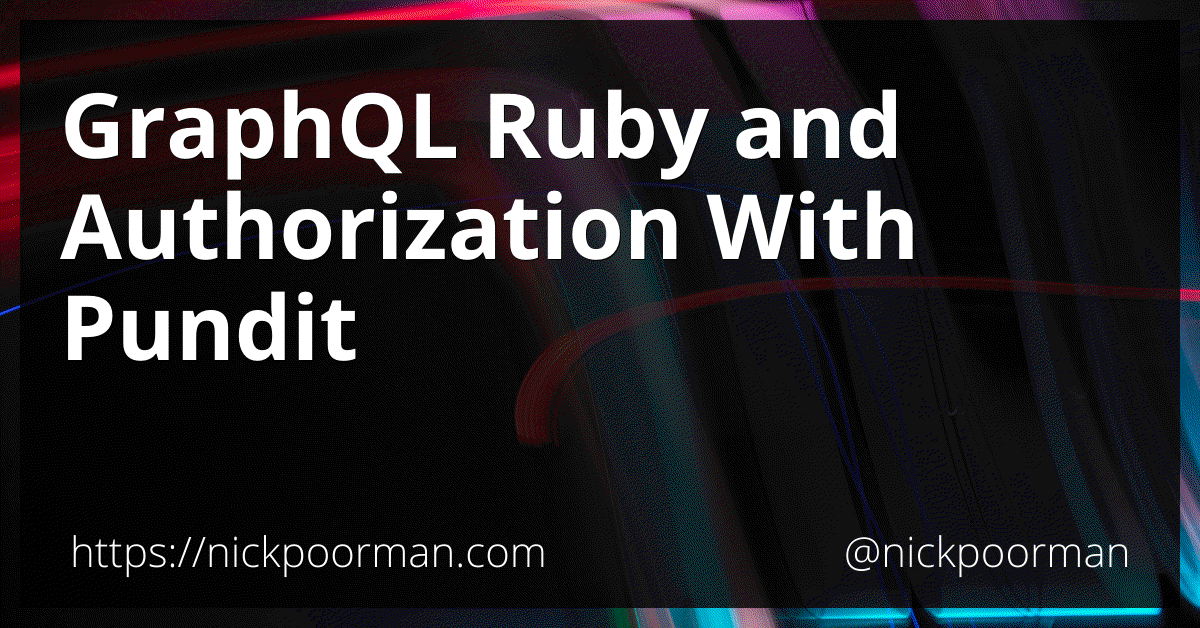GraphQL Ruby and Authorization With Pundit

Recently I began exploring GraphQL for use with Ruby on Rails. There is an
excellent gem graphql created by Robert
Mosolgo
, that provides all the workings of
GraphQL https://github.com/rmosolgo/graphql-ruby. Notably is the excellent
documentation accompanying this gem https://rmosolgo.github.io/graphql-ruby.
With all the documentation you should easily be able to get up and running with
GraphQL in Ruby. However, authorizing user access to records via
Pundit
may require a bit of exploration,
seeing as it’s original intended purpose is to authenticate by controller
actions. I’m going to quickly outline how I achieved this with a few code
snippets. First add Pundit
to you gemfile:
gem 'pundit.
Then in your Application Controller:
Now you’ll need a controller to serve the GraphQL queries. Let’s call it
graphql_controller.rb. As you can see below, GraphqlController inherits from
ApplicationController, thus giving us
Pundit
capabilities. To make things simple,
we have passed in a context with the current_user and pundit -which will
give us access to the Pundit authorize method in the GraphQL handlers. Also,
by passing the instance of the controller into the context, we are able to add
after_action :verify_authorized to ensure policies and scopes are
used
somewhere in the GraphQL handlers.
Next, if you’re using Relay you should put a Pundit authorize in your schema
where you decode the object id. You can see that we have used the pundit
instance passed into the context (ctx). Because we are simply looking up a
record here, we have decided to use the :show policy action.
If you happen to come across this demo
app
, you’ll notice an
abstraction for fetching
records
called FetchFeild. I’ll add an example below in case you also have chosen this
route. In the resolve method below, we add in a Pundit authorize call to
ensure the user has access to the record that is being fetched. Pundit will
automatically lookup the policy by model name (class name) and authorize
accordingly.
Lastly, when doing mutations (or even queries), you’ll need to add your
authorization to create or update the record. Below we have a mutation to create
a Post. We add the authorize call in the resolve proc. Note that we are
using a headless policy for
Pundit
here: i.e.
authorize :post.
Hopefully this will get you moving along with Pundit authorization a bit faster.